At BestCosmeticHospitals is a dedicated platform designed to provide comprehensive information on top-rated cosmetic surgery hospitals and clinics from around the world. Whether you're looking for expert surgeons specializing in facial aesthetics, body contouring, or advanced reconstructive surgery, this website serves as a reliable resource for patients to discover leading institutions offering the latest in medical innovations. The platform covers a wide range of cosmetic procedures, providing potential patients with insights into hospital accreditations, available technologies, and success rates, ensuring informed decision-making.
In addition to detailed hospital profiles, BestCosmeticHospitals highlights groundbreaking trends in the field, including robotic-assisted surgeries, 3D printing for custom reconstructive implants, and the integration of artificial intelligence (AI) for surgical planning. By staying at the forefront of these advancements, the website aims to connect individuals with clinics that offer not only expertise but also state-of-the-art facilities and personalized care, making it easier to choose the right institution for one's cosmetic needs.
Cosmetic surgery is rapidly evolving with groundbreaking technologies that improve precision, personalization, and patient outcomes. Here are three of the most exciting innovations shaping the field today:
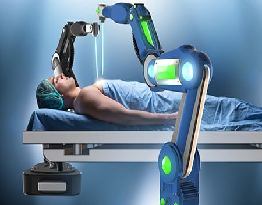
Robotic technology enhances surgical precision, particularly in complex procedures. Surgeons can perform operations with more accuracy and control, minimizing human error and reducing recovery time. This is especially beneficial for delicate facial surgeries and body contouring procedures.
3D printing is revolutionizing reconstructive surgery by enabling the creation of custom-made implants and prosthetics. Surgeons can design patient-specific models for procedures like facial reconstruction or bone repair, ensuring better fit and reduced complications, leading to improved overall outcomes.


Artificial intelligence is being used in pre-surgical planning to simulate potential outcomes. AI-driven tools allow surgeons to map out personalized treatment plans, offering patients a visual preview of results, making decision-making easier and more informed.
These technologies are advancing the field of cosmetic surgery, making procedures safer, more efficient, and tailored to individual needs.
Non-surgical cosmetic procedures are gaining popularity for those seeking effective results without the downtime of surgery. Here’s a look at some of the most popular non-invasive treatments:

Botox is a quick treatment that temporarily relaxes facial muscles to reduce the appearance of wrinkles, particularly around the eyes and forehead. The procedure is fast and requires no recovery time, with results lasting 3-6 months.
Dermal fillers, like hyaluronic acid, are injected to restore volume in areas like the cheeks and lips, or to smooth deep wrinkles. Fillers provide immediate results, and depending on the type, effects can last from 6 months to over a year.

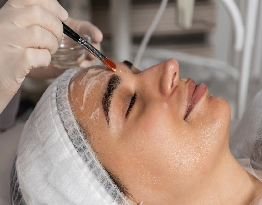
Chemical peels exfoliate the skin using special acids to remove dead skin cells, improving texture and reducing fine lines, sun damage, and acne scars. Recovery varies based on the peel's depth, and results leave skin looking smoother and rejuvenated.
CoolSculpting is a non-invasive fat reduction technique that freezes and eliminates fat cells in areas like the abdomen, thighs, and arms. Results take a few months to fully appear, offering a slimmer, sculpted look without surgery.

These treatments provide effective, minimally invasive solutions with minimal downtime, allowing patients to enhance their appearance with natural-looking results.
Choosing the right cosmetic surgeon is essential for ensuring safe procedures and achieving your desired results. Here’s a guide to help you select a trusted surgeon:

Ensure your surgeon is board-certified and specializes in cosmetic surgery. This guarantees they have undergone rigorous training and meet industry standards for safety and expertise.
Look for patient reviews and testimonials to get an idea of the surgeon’s track record. Also, request to see before-and-after photos of similar procedures to assess their results.


Select a surgeon with extensive experience in the specific procedure you’re considering. Specialized expertise often leads to better outcomes.
A good surgeon takes time to understand your goals and offers a tailored treatment plan. They should provide clear, honest communication and set realistic expectations for your results.
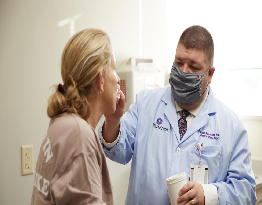
By following these tips, you can choose a cosmetic surgeon who will provide high-quality care and help you achieve the best possible outcome.
Cosmetic surgery offers more than just physical enhancements; it can have significant emotional and psychological benefits, especially when approached with realistic expectations.

Correcting perceived imperfections can lead to a significant boost in self-esteem. Many individuals feel more comfortable and confident in their appearance after surgery, positively impacting their daily interactions.
Cosmetic procedures can help individuals feel more self-assured in social and professional situations. Feeling better about one’s appearance often translates into improved confidence and self-expression.


For many, addressing long-standing insecurities with cosmetic surgery can reduce feelings of self-consciousness, allowing them to focus on their lives without being preoccupied with their looks.
While the psychological benefits can be profound, it’s important to have realistic expectations. Cosmetic surgery can enhance appearance but should not be viewed as a solution for deep-seated emotional issues.

When done for the right reasons, cosmetic surgery can lead to improved confidence and a greater sense of well-being.
Facial rejuvenation can be achieved through both surgical and non-surgical procedures, depending on your age, goals, and recovery preferences. Here’s a comparison to help guide your decision:

Dermal fillers are injectable treatments that restore volume to areas like the cheeks and lips, smooth wrinkles, and enhance facial contours.
Best For: Mild to moderate signs of aging, typically for individuals in their 30s to 50s.
Recovery: Minimal to no downtime, with immediate results that last 6-18 months.
Botox reduces fine lines by temporarily relaxing facial muscles, targeting wrinkles like crow’s feet and frown lines.
Best For: Those seeking to soften dynamic wrinkles caused by facial movements.
Recovery: No downtime; results last 3-6 months.
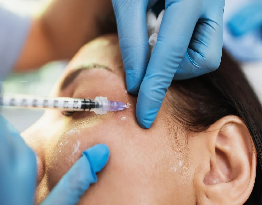
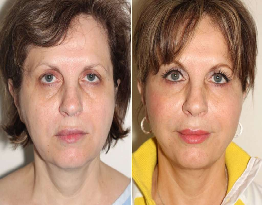
A facelift tightens sagging skin, reduces deep wrinkles, and redefines facial contours for a more youthful appearance.
Best For: More advanced signs of aging, typically for individuals in their 50s and up.
Recovery: Several weeks, with results lasting 10+ years.
A less invasive version of the full facelift, targeting the lower face and jawline.
Best For: Mild sagging and wrinkles, ideal for individuals in their 40s to 50s.
Recovery: Shorter recovery than a full facelift, around 1-2 weeks.

Choosing between fillers, Botox, or facelifts depends on your age, desired results, and how much recovery time you're willing to invest. Non-surgical options provide quick fixes, while surgical procedures offer longer-lasting, more dramatic results.
In 2024, cosmetic treatments continue to evolve, with several trends shaping the industry. Here’s a look at what’s popular now:
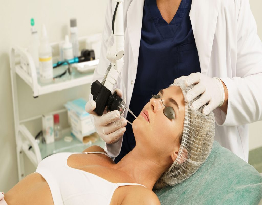
Non-surgical treatments, such as Botox, fillers, and laser treatments, are more popular than ever. These options provide noticeable results with minimal downtime, appealing to those who want quick, effective enhancements without surgery.
Patients are increasingly seeking subtle, natural-looking improvements. Whether it’s enhancing facial features with fillers or softening wrinkles with Botox, the goal is to look refreshed, not overdone. Surgeons are focusing on maintaining harmony and balance with each procedure.

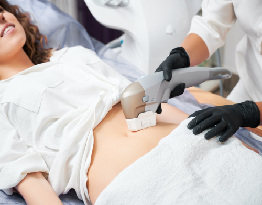
Innovative non-invasive body contouring options, like CoolSculpting and EMSCULPT, are gaining traction in 2024. These techniques help reduce fat and tone muscles without the need for surgery, offering effective body transformation with little to no recovery time.
These trends highlight the growing demand for convenient, natural-looking, and effective cosmetic treatments that fit seamlessly into modern lifestyles.
A pre-surgery consultation is essential for ensuring a safe and successful procedure. Here’s what to discuss with your doctor:

Be open about your medical history, including any previous surgeries, chronic conditions, medications, and allergies. This information helps the surgeon assess your suitability for the procedure and avoid complications.
Ask your doctor about the risks associated with the surgery. Understanding the possible complications, such as infection or scarring, helps you make an informed decision.

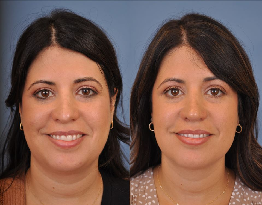
Discuss your aesthetic goals and ensure they align with what the procedure can realistically achieve. Ask for before-and-after photos of similar cases to get a clear idea of the possible results.
Get details on how long recovery will take, what to expect during the healing process, and when you can resume normal activities. Understanding the timeline helps you plan your post-surgery care.
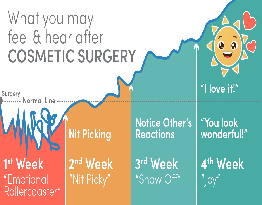
By addressing these key areas, you’ll be better prepared for surgery, knowing the risks, benefits, and what to expect throughout your recovery.
The demand for cosmetic surgery among men is on the rise, with many seeking enhancements to improve their appearance and confidence. Here are some of the most popular procedures for men:

Hair restoration is one of the most sought-after procedures for men dealing with hair loss. Techniques like Follicular Unit Extraction (FUE) offer natural-looking results by transplanting individual hair follicles to thinning areas.
Gynecomastia surgery, or male breast reduction, is becoming more common as men seek to correct excess breast tissue. This procedure helps create a more masculine chest contour, boosting confidence.

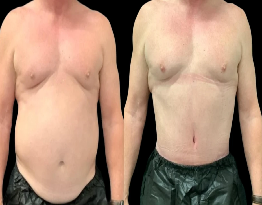
Procedures like liposuction and CoolSculpting help men sculpt their bodies by removing stubborn fat deposits, particularly around the abdomen and flanks, offering a more athletic appearance.
Men are increasingly turning to facial procedures, including Botox, fillers, and eyelid surgery, to maintain a youthful appearance and reduce signs of aging, such as wrinkles and sagging skin.
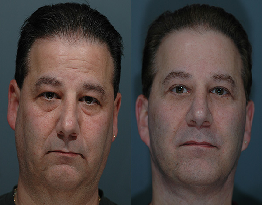
As cosmetic surgery becomes more accepted among men, these procedures provide effective ways to enhance appearance and boost self-esteem.
Combining cosmetic procedures, like a tummy tuck with breast augmentation, has become a popular option for those seeking a complete transformation. Here’s why:

By addressing multiple areas in one surgical session, patients achieve a more balanced and harmonious look. Combining procedures can lead to a more dramatic and cohesive transformation, such as refining both the midsection and bust for a proportionate appearance.
Undergoing multiple procedures at once saves time and money. Patients only have to go through anesthesia and surgery once, which reduces the overall time spent in the operating room and eliminates the need for separate recovery periods for each procedure.

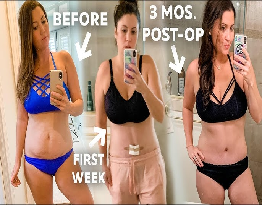
One of the biggest benefits of combining surgeries is having a single recovery period. While the initial healing time might be slightly longer or more intense, it’s more convenient than multiple recoveries over time. Patients experience the full results sooner with less overall disruption to their lives.
However, it’s important to work with a qualified surgeon to ensure the combination of procedures is safe and suitable for your goals and health.
Proper post-surgery care is essential for a smooth recovery and achieving the best results. Here are some key tips to follow:

Keep your incision areas clean and dry to prevent infection. Follow your surgeon's instructions on wound care, and use any prescribed ointments to aid healing. Avoid direct sun exposure on incisions to prevent darkening scars, and consider using silicone-based treatments to minimize scarring.
Rest is critical in the first few days after surgery. Gradually resume light activities as advised by your doctor, but avoid strenuous exercise or lifting heavy objects until you are cleared. Moving gently helps prevent complications like blood clots while allowing your body to heal.


Eat a balanced diet rich in proteins, vitamins, and minerals to support tissue repair. Stay well-hydrated by drinking plenty of water, and avoid alcohol and smoking, which can interfere with healing.
Attend all scheduled follow-up appointments to monitor your recovery. If you notice any unusual signs like excessive pain, swelling, fever, or bleeding, contact your surgeon immediately to rule out complications.
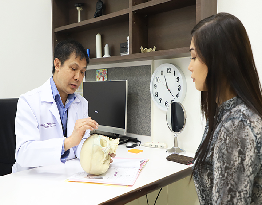
By following these steps, you can maximize your recovery and ensure the best long-term results from your procedure.